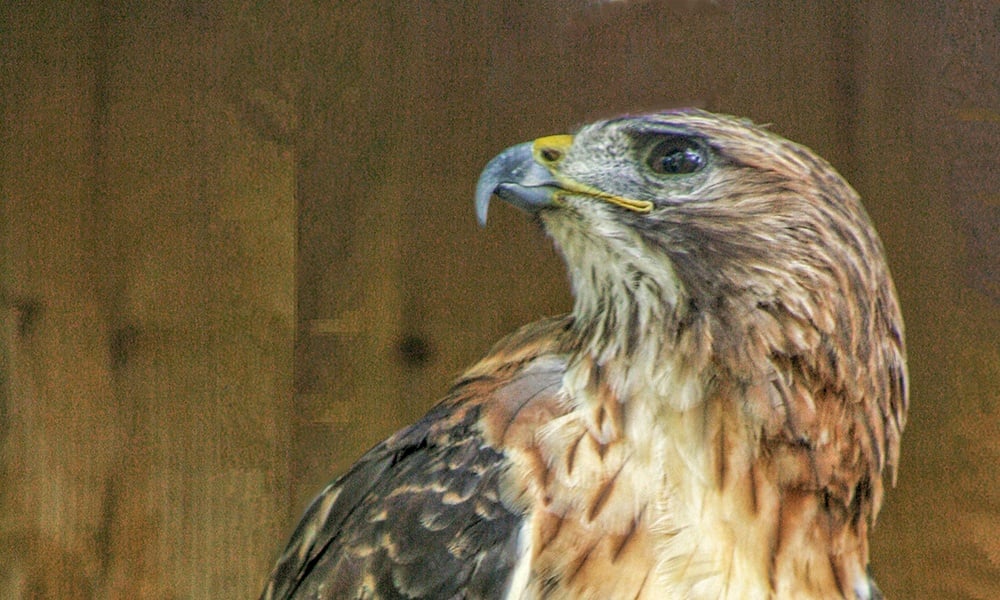
For 62 years Willowbrook Wildlife Center has been known for rehabilitating native wildlife and providing education programs for people of all ages throughout DuPage County.
For those who visit the center, our rehab patients are kept in areas where any human contact is limited in order to alleviate stress on these wild patients. We do, however, have animals that are available for the public to view. These animals live in our indoor exhibit area as well as our outdoor exhibit trail and each have very unique stories. Whether it’s a bird that can no longer fly or a raccoon with a missing limb, they all have something in common; they are no longer able to care for themselves in the wild. Over the years, we have had many animals live out their lives here at Willowbrook. While nothing can beat life in the wild, there are things we can provide for these animals in order to ensure a good quality of life while they are with us. The most important of these is our training program.
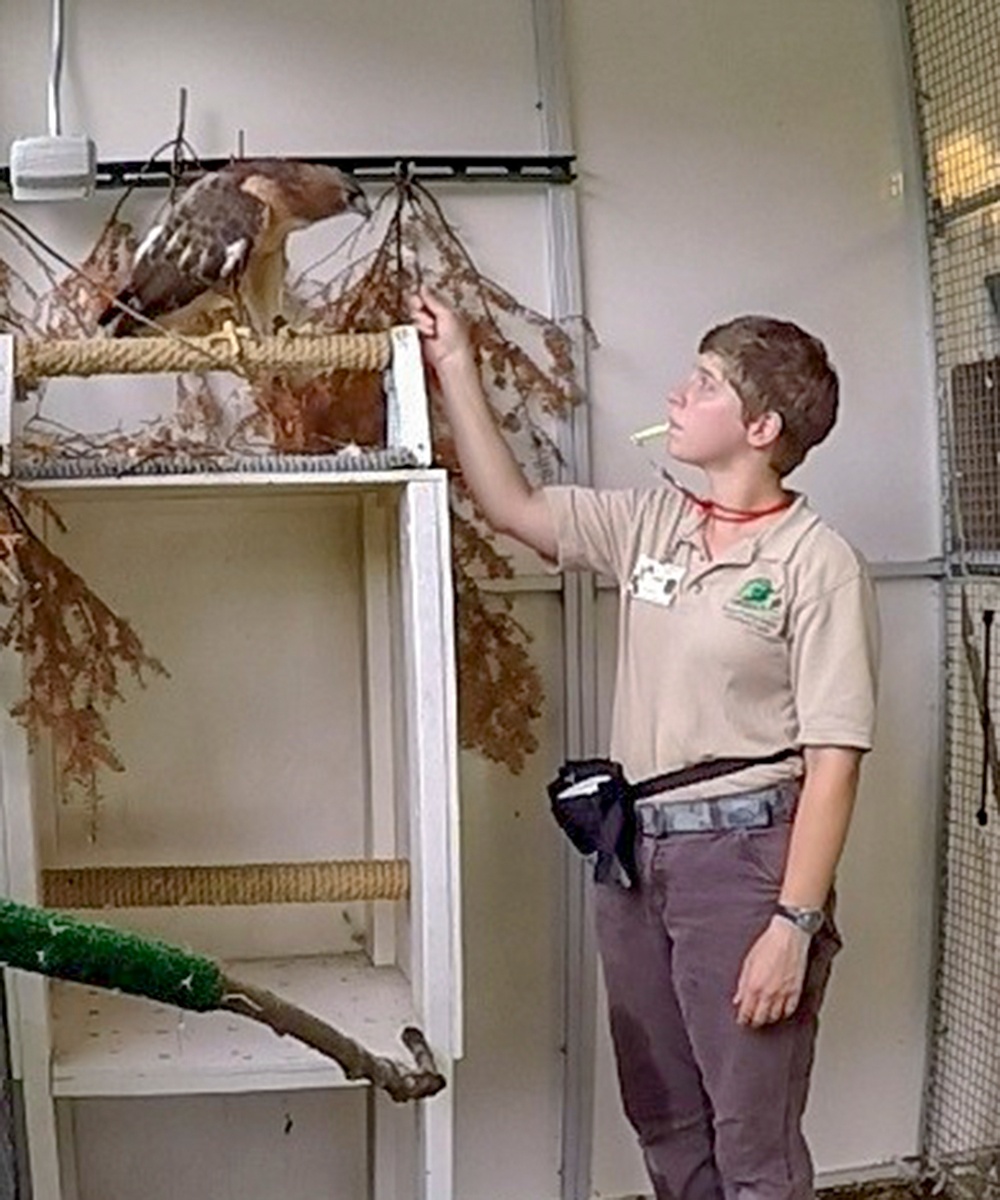
Willowbrook naturalist Leigh Korreck trains with Professor, a red-tailed hawk. Korreck offers small pieces of food as reinforcement for him. Each animal we train is unique. Sometimes getting animals to remain calm while staff walk in and out of their enclosure improves their quality of life immensely.
We train with our permanent residents to provide them with enrichment, husbandry, medical care, and to teach potential program behaviors they are comfortable doing in front of an audience. Overall, training helps the animals live a less stressful life at Willowbrook. Most of our residents came to us as adult animals and have already lived for some time on their own. It can be very scary for them to suddenly be around people most of their days. Viewing a wild animal up close can be a great experience for us, but it isn’t always a great experience for the animal. Taking that into consideration and seeking to provide the best possible welfare for them, we established this training program about 2 years ago.
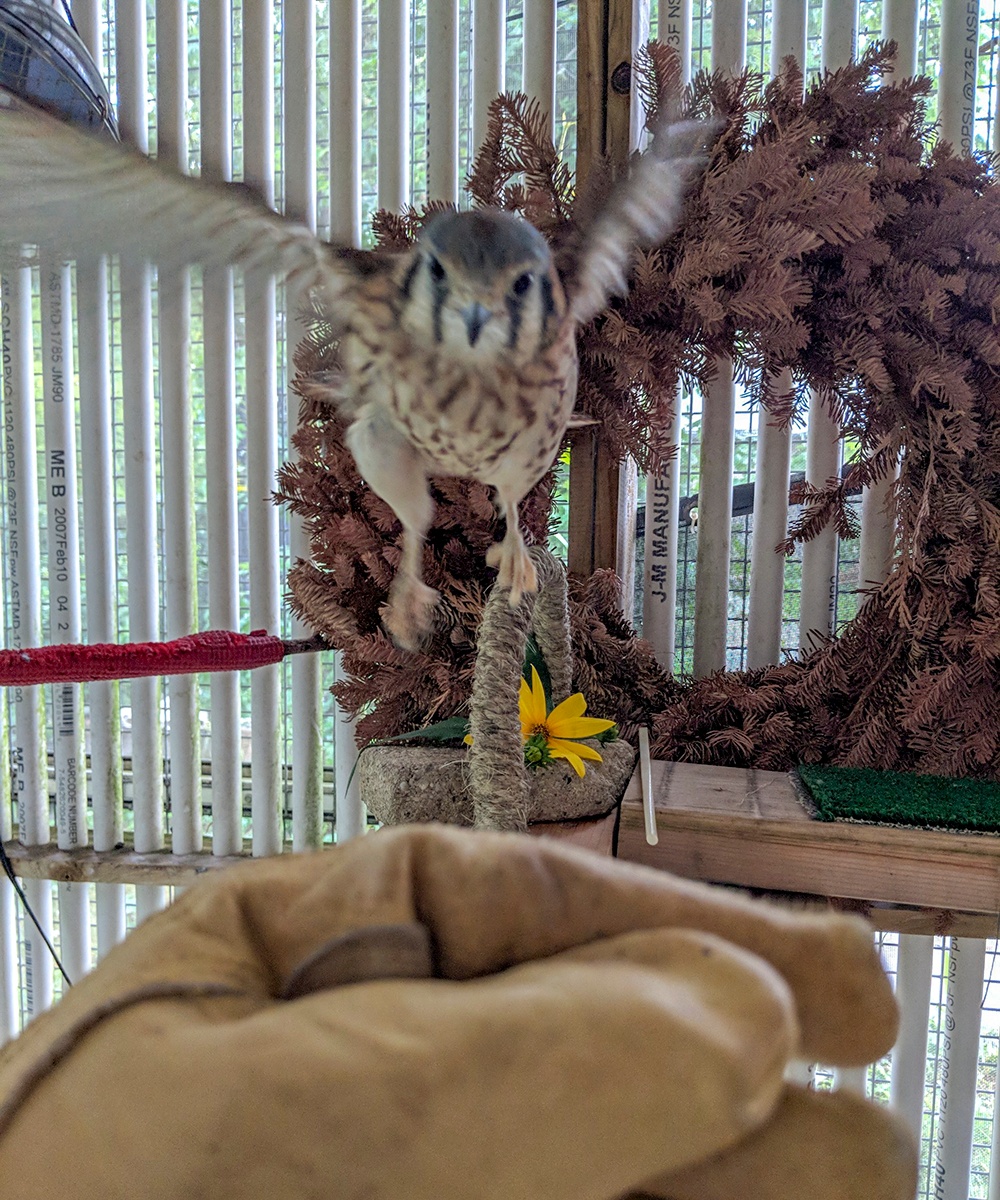
Skylar, an American kestrel, flies to Willowbrook education specialist Stephanie Touzalin. Getting wild birds to move toward a trainer is a feat in itself, but getting them to fly to a trainer is a whole other level! Stephanie took a lot patience and time to achieve this incredible relationship with Skylar.
The training program we use at Willowbrook is called “operant conditioning,” also known as “positive reinforcement training.” This training method is unique in that it allows the animals to decide whether to participate or not. We pay close attention to their body language and how they are reacting to us. Whether they are actively participating in the training session or showing signs of stress, we respond accordingly, giving the animal control of what is happening. We find it empowers the animals and gives them a sense of control over their environment. We have seen much success with this method of training and hope to continue it for years to come.
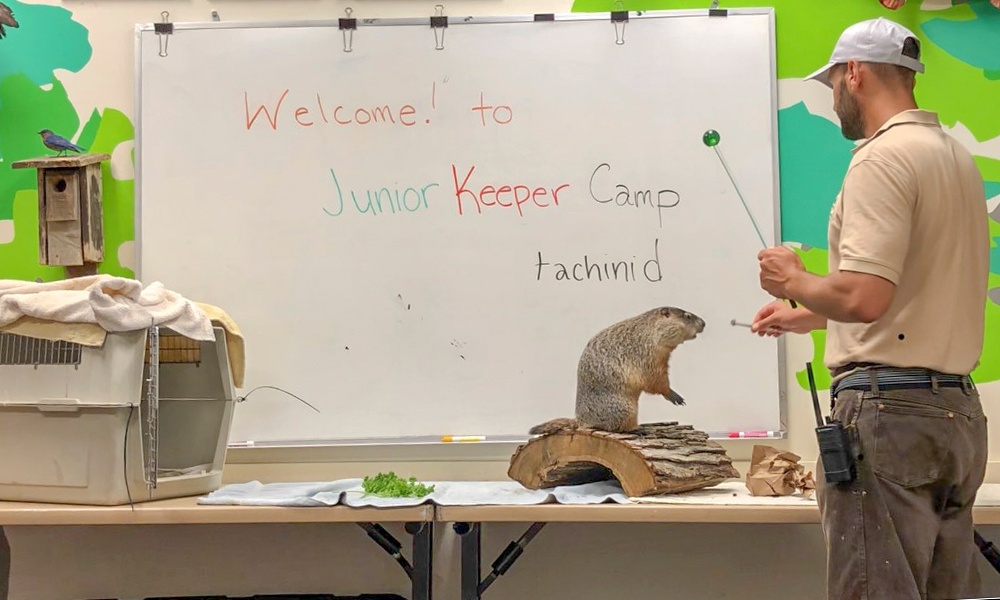
Willowbrook naturalist Nathan Hambel trains with our woodchuck during our Junior Keeper Camp. The kids were able to see the woodchuck out of his enclosure for a very up-close-and-personal experience thanks to his training!
Our animal care and education staff work very hard to provide a good quality of life for our permanent residents. We are able to build relationships with these amazing animals and monitor their health much more closely with minimal intrusion, benefitting both the animals and Willowbrook staff. The husbandry behaviors we have found success with in our residents have made substantial differences in their lives, such as moving into a carrier for transport, stepping up on a scale for regular weight checks and taking medications orally from us . We also have seen success in programming behaviors such as flying to a trainer’s glove, moving to designated program areas in and out of the enclosures, and making noises (our American kestrel will trill on cue!). So, next time you visit and see a staff member interacting with one of the animals, please feel free to ask about what they are doing! We do training sessions multiple times a day and it is a great opportunity to see how we interact with these incredible animals.
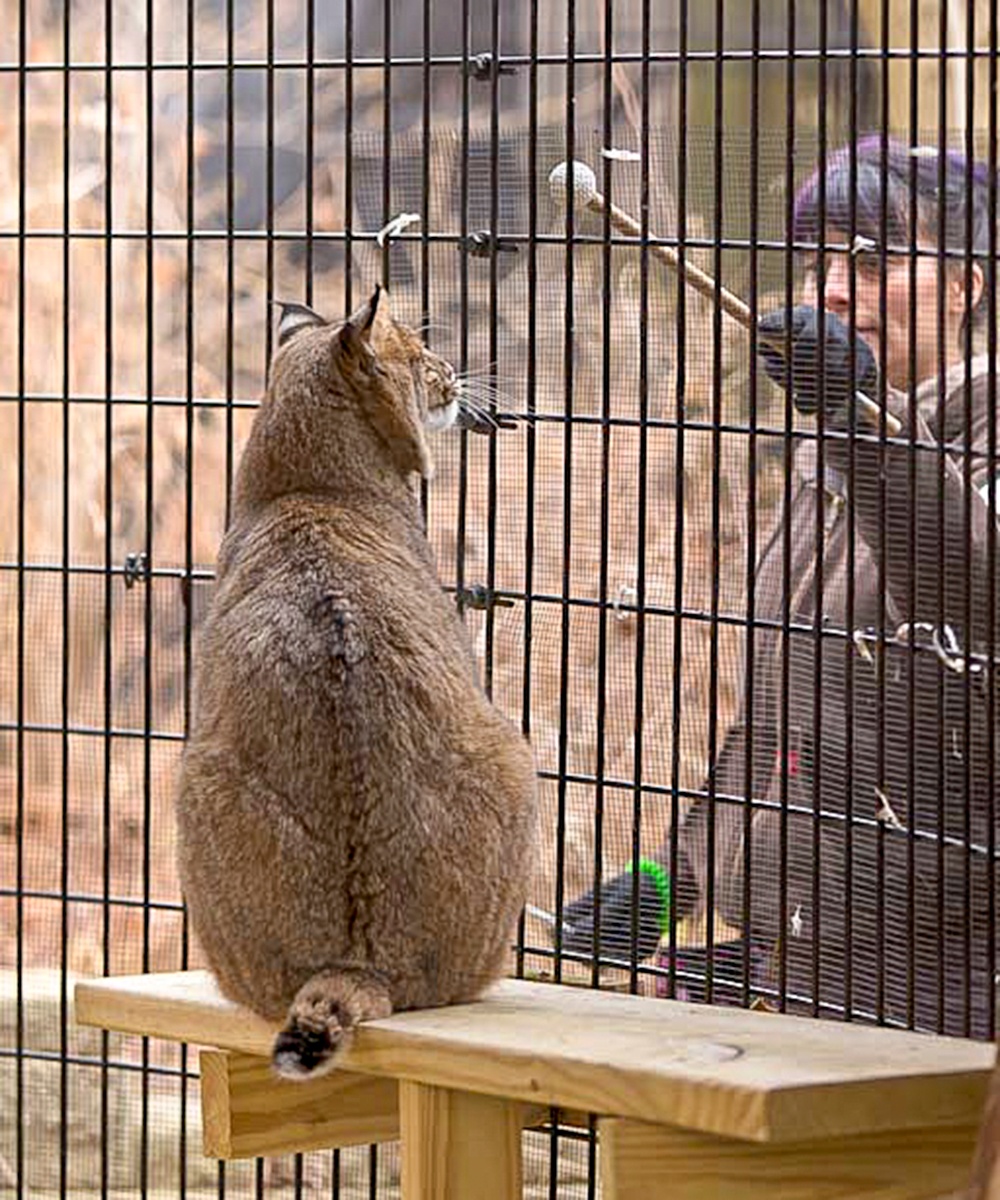
Willowbrook wildlife keeper Alicia Biewer target trains with bobcat. Targeting allows us to easily move the animals around their enclosures. We attempt to teach this behavior with all of our animals in training.
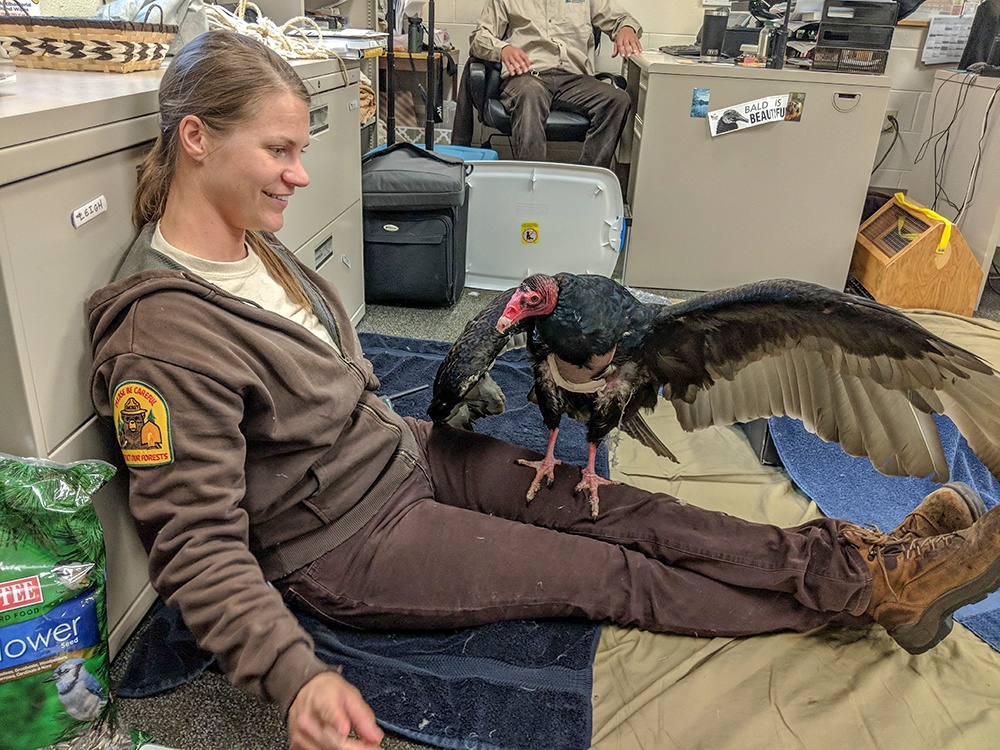
Willowbrook wildlife interpreter Krystle Smith and our oldest turkey vulture, who was in treatment for almost two months after she injured herself in her enclosure. She spent her recovery time in closely monitored and mostly cage-free between our hospital area and our office. This time allowed us to build up some trust, and she continues training with us even now that she is back in her exhibit enclosure.